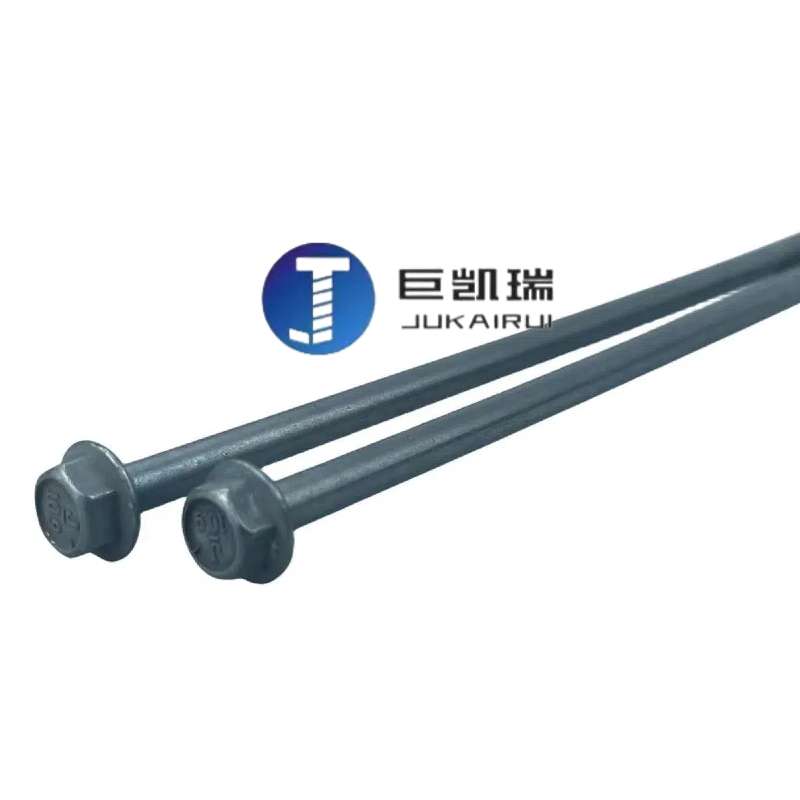Release time:2020-01-16 18:44 Browse:

In many fields such as machinery manufacturing, automotive, aviation, shipbuilding and construction, screws, as indispensable fasteners, play a key role in connection and fixing. However, in practical applications, according to the specific needs of different types of screws are also diverse, of which lengthened screws and ordinary screws are two common types. There are significant differences between them in many aspects, these differences are not only reflected in the appearance of the size, but also to the material, performance, application scenarios and other levels.
### Length difference: customization and standardization
First of all, from the most direct dimension, the most significant difference between lengthening screws and ordinary screws is their length. The length of ordinary screws usually follows a certain standard size range, which is defined by international or industry specifications to meet most conventional connection needs. The lengthening screws, as the name suggests, have an increase in length compared with ordinary screws, and this increase is not random, but customized according to the needs of specific application scenarios. For example, in automotive manufacturing, when it is necessary to connect two parts that are far apart, ordinary screws may not be able to meet the requirements due to insufficient length, so it is necessary to use lengthening screws to achieve effective connection.
### Material and strength: adapt to different environments
In addition to length, there may also be differences between lengthened screws and ordinary screws in terms of material and strength. Ordinary screws are mostly made of carbon steel, alloy steel or stainless steel and other common materials, which have good mechanical properties and corrosion resistance, and can meet the general connection needs. However, in some special environments, such as high temperature, high pressure, strong corrosion and other extreme conditions, the performance of ordinary screws may not meet the requirements. At this time, the lengthening screws may be made of higher strength alloy steel, titanium alloy or special anti-corrosion materials to ensure their stability and reliability in harsh environments. For example, in the construction of Bridges, lengthening screws not only need to pass through thick concrete layers, but also need to withstand long-term wind and sun exposure and humidity changes, so there are higher requirements for its material and strength.
### Thread design and accuracy: ensure connection quality
Thread as the core part of the screw, its design and accuracy directly affect the quality and stability of the connection. The thread design of ordinary screws usually follows standard specifications, with uniform tooth Angle, pitch and tolerance range. The extension screw may be more complex and fine in the thread design to adapt to the longer connection distance and higher connection requirements. For example, in some high-precision mechanical equipment, the thread of the lengthening screw may require special treatment, such as precision machining, heat treatment, etc., to improve its accuracy and wear resistance. In addition, in order to ensure the tightness and reliability of the connection, the screw thread accuracy of the extension screw is often higher and the tolerance range is narrower.
### Application scenarios: across distances and special needs
There are also significant differences between lengthening screws and ordinary screws in application scenarios. Ordinary screws are widely used in a variety of conventional connection scenarios, such as mechanical manufacturing, auto parts installation, furniture assembly, etc. These scenarios are usually not particularly high in connection distance and strength requirements, and ordinary screws can meet the needs. The lengthening screws are more used in occasions that need to be connected across a large distance, such as structural connection in bridge construction, floor or wall connection in high-rise buildings, and component assembly of large mechanical equipment. In addition, in some special cases, such as complex parts, limited space or need to withstand high loads and vibration, ordinary screws may not be competent, at this time, lengthening screws become the ideal choice.
### Customization and cost: Meet special needs and consider economy
It is worth noting that the customized production characteristics of lengthening screws also bring cost considerations. Due to the need to design and produce according to specific needs, the manufacturing cost of lengthening screws may be higher than that of ordinary screws. However, in practical applications, this customized production ensures the precise matching and efficient connection of screws, thereby improving the quality and efficiency of the overall project. Therefore, when weighing costs and benefits, it is necessary to make reasonable choices based on specific application scenarios and needs.
To sum up, there are significant differences between lengthened screws and ordinary screws in length, material, strength, thread design, application scenarios and cost. These differences make each of them play an irreplaceable role in different fields. In practical applications, we need to choose the right screw type according to the specific needs to ensure the quality and stability of the connection.
# Lengthening screws # Lengthening bolts # Lengthening outer hex screws # Lengthening inner hex screws # fasteners

